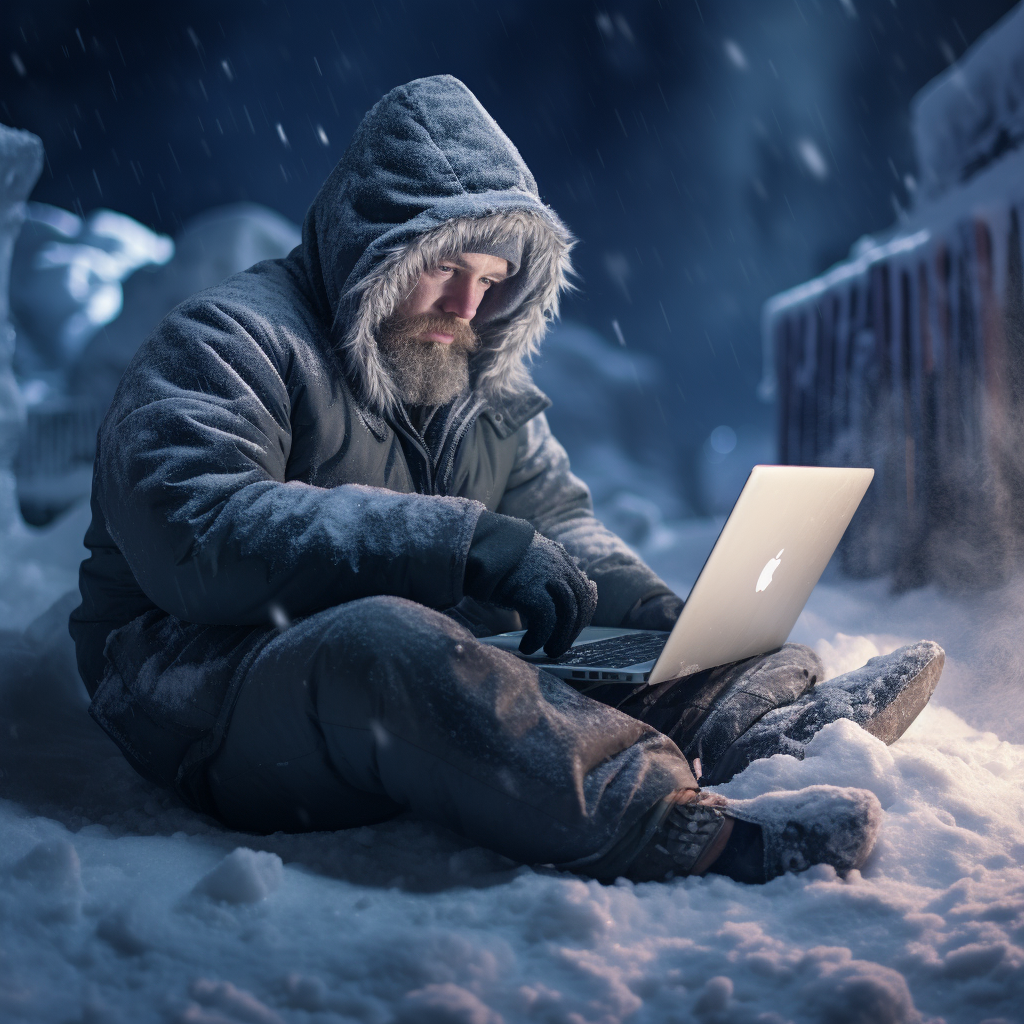
Subscribe To Sixbattery.com
Subscribe to the Porto mailing list to receive updates on new arrivals, special offers and our promotions.

For many of us, our laptop is an essential daily companion that enables us to work, communicate, and be entertained wherever we are. However, when frigid winter temperatures arrive, the performance and battery life of our trusty laptop can suffer. Exposing your laptop to cold conditions outside or even in an unheated indoor space can result in problems like drastically reduced battery life, sluggish performance, and condensation buildup within the machine.
Thankfully, with some preparation and awareness, you can take proactive steps to keep your laptop humming along smoothly even when temperatures take a nosedive. In this article, we’ll examine how the cold negatively impacts laptops and provide tips to maximize your battery power, prevent moisture issues, and keep your device operational in the chilliest weather.

To understand how to safeguard your laptop in cold conditions, it helps to first understand precisely how and why low temperatures cause problems with the machine.
One major issue is that lithium-ion batteries commonly used in laptops will experience a noticeable loss of power when exposed to cold temperatures. In fact, some estimates suggest batteries may drain two to three times faster in freezing or near-freezing weather compared to more moderate temperatures. This is because the movement and flow of electrons that produce power are slowed by the cold. As such, you’ll get significantly reduced run time from a fully charged battery if working outside on a frigid day.
Condensation is another major risk of exposing your laptop to cold. When bringing your device from a warm interior space into the chill outdoors, rapid temperature change combined with the laptop’s heat production can cause moisture in the air to condense on and within the machine. This condensation buildup can potentially short circuit internal components and cause permanent damage if care is not taken to allow gradual adjustment to temperature changes.
Being aware of these vulnerabilities is the first step toward keeping your laptop protected and powered up through the cold seasons.
Keeping your battery charged will be an ongoing battle when using your laptop in cold conditions that sap its power reserves quickly. Here are some practical tips to maximize your battery life and keep your device powered on when out in the cold:
Keep laptop in an insulated bag or sleeve when not in use. This will retain heat and keep the machine warmer than outside air, reducing battery drain.
Let laptop warm up to room temperature before turning it on. Letting it sit powered off but warming up for 15 minutes saves initial power drain.
Avoid completely draining or fully charging the battery when temperatures are very low. Keep charge levels between 40-80% to reduce stress.
Put laptop in sleep mode rather than fully powering down if stepping away briefly. Restarting from scratch uses more energy.
Carry a fully charged external spare battery and swap it out when your internal battery gets low.
Reduce screen brightness and limit programs running in background to conserve power.
If possible, try to only use laptop in short bursts while in the cold to minimize battery drain.
With preparation and attentive battery management, you can overcome the increased power demands of using your laptop in frigid conditions.
Condensation forming inside your laptop when bringing it into a warm space from the cold can cause real damage. Here are some tips for combating internal moisture issues:
Allow laptop to warm gradually to room temperature before turning on. Don't power up right away or condensation may form.
Use desiccant packs made for electronics that absorb moisture. Keep one in laptop case when not in use.
Consider keeping laptop powered on if moving from very cold place to warmer indoor space. This reduces temperature change.
Avoid exposing laptop to sudden temperature spikes in either direction. Allow time to adjust.
Keep laptop dry – avoid rain, snow, or spills that could increase moisture. Wipe down before bringing inside.
Let laptop sit on a table, not on lap, while warming to room temperature. This allows air circulation.
If concerned about condensation, remove battery and let laptop sit for 30 minutes before turning on.
With attentive usage and moisture control, you can avoid the headaches and damage potential condensation can cause within your laptop.
In addition to battery and moisture considerations, a few other measures can also keep your laptop functioning smoothly in cold environments:
Use an external keyboard if experiencing issues with the integrated keyboard malfunctioning when cold.
Carry extra charged backup batteries so ability to swap is not limited. Store spare battery in warm place when not in use.
Know the operational temperature range of your laptop model and avoid exceeding low end specifications.
Keep laptop dry and out of rain, snow, or puddles which could cause water damage issues.
Use a laptop cooling pad to avoid overheating, which is more likely when running processor-heavy applications in the cold.
Avoid touching the laptop with wet hands or gloves as moisture increases risk of electric shorts.
With some foresight and preventative care, you can troubleshoot performance issues that tend to crop up when using laptops in icy conditions.
Frigid temperatures undoubtedly present challenges when relying on electronics like laptops that prefer more moderate conditions. But being aware of the potential impacts of cold on factors like battery life and internal condensation, you can take steps to keep your device operational and damage-free even in the depths of winter. With a few purposeful precautions like insulating your laptop when not in use, allowing gradual warmups before powering on, managing battery charging, and controlling moisture, you can confidently use your laptop to increase productivity and convenience regardless of the weather.